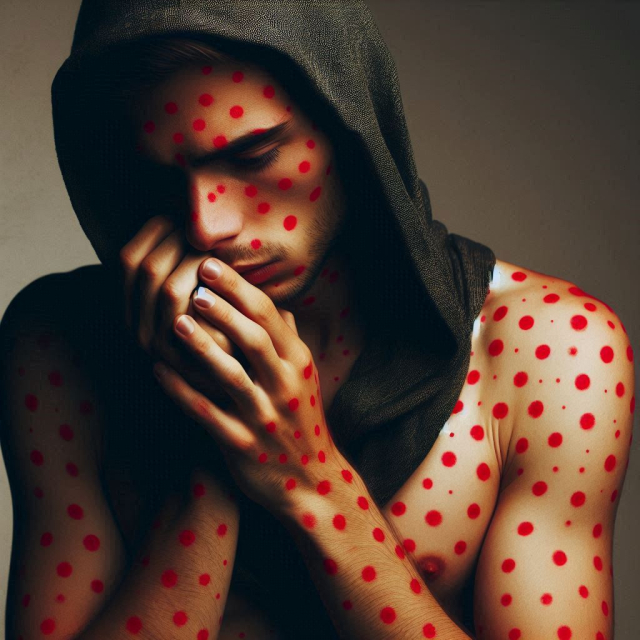Monkeypox, also known as monkeypox, is a disease that has captured global attention due to its recent reemergence and spread outside of the regions where it has historically been observed. Although less severe than human smallpox, monkeypox has raised concerns due to its potential to spread and cause outbreaks in human populations. This article explores in depth the origin, transmission, symptoms, treatment, and the response of the international community to this health challenge.
Origin and Discovery of Monkeypox.
Monkeypox is a viral zoonosis, meaning it is transmitted from animals to humans. It was first identified in 1958 when two outbreaks of a smallpox-like disease occurred in colonies of monkeys kept for research. This is where the name "monkeypox" comes from. However, monkeys are not thought to be the primary reservoirs of the virus. In fact, rodents and other small African mammals are thought to be the natural reservoirs of the virus.
First Human Case.
The first human case of monkeypox was recorded in 1970 in the Democratic Republic of the Congo (DRC). Since then, most cases have been reported in rural areas of Central and West Africa, particularly in countries such as Cameroon, the Central African Republic, Nigeria, and the DRC. Despite its name, transmission of the virus from monkey to human is rare; most human cases are due to direct transmission from other infected animals or from human to human.
Transmission and Life Cycle of the Virus.
Monkeypox is transmitted primarily through direct contact with blood, body fluids, or lesions on the skin or mucous membranes of infected animals. It can also be transmitted through the ingestion of undercooked meat from infected animals or through contact with contaminated materials.
Transmission from Animal to Human.
Zoonotic (animal-to-human) transmission occurs primarily when people hunt, handle, or consume infected animals, particularly rodents and primates. Workers who handle wild animals or those who live near the forest are at increased risk of exposure.
Human-to-Human Transmission.
Although less common, human-to-human transmission can occur through close contact with respiratory secretions, skin lesions of an infected person, or contaminated objects, such as bedding. The virus enters the body through broken skin, the respiratory tract, or mucous membranes (eyes, nose, or mouth). Transmission can also occur through respiratory droplets during prolonged face-to-face contact.
Symptoms and Diagnosis.
Monkeypox is characterized by symptoms similar to those of smallpox, although generally less severe. The incubation period (interval from infection to onset of symptoms) is usually 6 to 13 days, but can vary between 5 and 21 days.
Stages of the Disease.
Prodromal Phase (1-5 days): Early symptoms include fever, severe headache, swollen lymph nodes, back pain, muscle aches, and lack of energy. Lymphadenopathy (swollen lymph nodes) is a hallmark of monkeypox compared to other similar diseases, such as human smallpox.
Rash Phase (1-3 days after fever onset): The rash typically begins on the face and spreads to other parts of the body, including the palms of the hands and soles of the feet. The lesions go through several stages before forming a scab that eventually falls off. The lesions may be painful and, in severe cases, leave scars.
Diagnosis.
Diagnosis of monkeypox is confirmed by laboratory testing, usually by detection of viral DNA using the polymerase chain reaction (PCR) technique. Because symptoms can be similar to those of other diseases, it is crucial to make a differential diagnosis with other conditions, such as chickenpox, measles, or bacterial infections that cause skin lesions.
Treatment and Prevention.
There is no specific treatment for monkeypox; however, the disease is generally self-limiting and patients recover without medical intervention. Treatment is primarily symptomatic and supportive, focused on relieving symptoms and preventing complications.
Supportive Care.
Clinical management includes:
- Hydration: Maintain adequate fluid intake to prevent dehydration.
- Pain and fever control: Use of analgesics and antipyretics.
- Wound care: Keep lesions clean and dry to prevent secondary infections.
Antivirals and Vaccines.
Antivirals such as tecovirimat, approved for the treatment of monkeypox in some countries, are available that can be used in severe cases. In addition, people vaccinated against smallpox (before the disease was eradicated in 1980) appear to have some protection against monkeypox. In outbreak situations, third-generation vaccines can be administered to control the spread.
Preventive measures.
Monkeypox prevention is based on:
- Avoid contact with wild animals: Especially those that could be infected.
- Practice proper hygiene: Wash hands frequently, avoid contact with contaminated materials.
- Isolation of confirmed cases: To prevent person-to-person transmission.
Recent Outbreaks and International Response.
In 2022, monkeypox began to spread outside of Africa, with outbreaks reported in Europe, North America, and other regions. This event drew worldwide attention, as the disease was previously considered confined to endemic areas in Africa.
Global Response.
The international community has responded with control measures, including contact tracing, isolation of cases, and ring vaccination (vaccination of close contacts of a confirmed case). The World Health Organization (WHO) has issued guidelines and coordinated efforts to control the spread of the virus.
Challenges and Lessons Learned.
The monkeypox outbreak has highlighted the need for global surveillance for emerging diseases. The reemergence of monkeypox in non-endemic areas underscores the importance of preparedness and response capacity for public health emergencies. Furthermore, international cooperation is crucial to contain the spread of infectious diseases and mitigate their impact.
Monkeypox, although not as lethal as human smallpox, represents a significant challenge to global public health. Its recent reemergence in areas outside its traditional endemic range has underscored the need for continued surveillance, preparedness and effective response. While recent outbreaks have raised alarm, they have also provided an opportunity to strengthen international cooperation and improve disease control strategies.
The future of the fight against monkeypox will depend on our ability to implement effective prevention measures, develop more targeted treatments, and ensure that vaccines are available to at-risk populations. By learning from the lessons of the past and present, the global community can be better prepared to confront not only monkeypox, but also other emerging diseases that may arise in the future.






